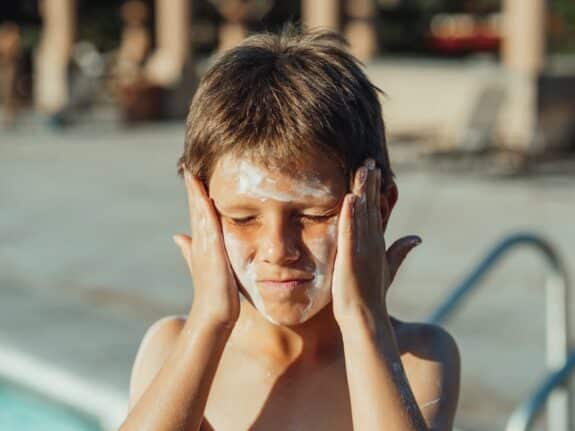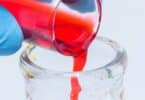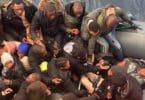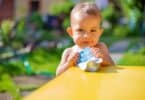Last week I posted some tips for keeping your children safe in the sun. The Environmental Working Group (EWG) has done an independent study on the popular sunscreens that most families use and the findings are scary.
If the sun doesn’t get you, your sunscreen might.
A new study claims five of six sunscreens inadequately block harmful rays or contain substances with “significant” safety issues.
The Environmental Working Group plans to report today that just 128 of 785 sunscreens studied offer “very good sun protection with ingredients that present minimal health risks.”
The group gives 620 other products “Caution” ratings and lists the remaining 37 as “Avoid.”
“Most people trust that the claims on a (sunscreen) bottle will ensure that the product truly protects their and their families’ health,” researchers wrote. “Nothing could be less certain.”
EWG didn’t test sunscreens in a lab but checked each brand’s ingredients against some 400 safety and efficacy studies.
EWG Executive Director Richard Wiles said some products work great but contain questionable substances like oxybenzone. He said some studies have shown oxybenzone mimics the hormone estrogen, which doctors have tied to certain cancers.
Other findings:
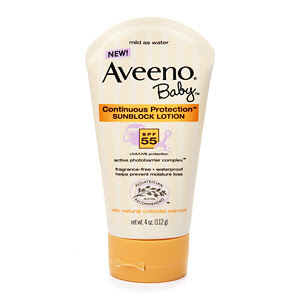 EWG gave only three of 10 top-selling brands good ratings: Blue Lizard Australian Suncream SPF 30/Baby, California Baby Water-Resistant Hypo-Allergenic Sunscreen SPF 30-plus, and Aveeno Baby Sunblock Lotion Continuous Protection SPF 55.
EWG gave only three of 10 top-selling brands good ratings: Blue Lizard Australian Suncream SPF 30/Baby, California Baby Water-Resistant Hypo-Allergenic Sunscreen SPF 30-plus, and Aveeno Baby Sunblock Lotion Continuous Protection SPF 55.
Well-known products like Coppertone Sport Sunblock Lotion SPF 15 and Neutrogena Healthy Skin Face Lotion SPF 15 got “Avoid” ratings. Neutrogena did not immediately comment, while Coppertone would only say that it sells “a variety of different products for different needs.”
54 percent of brands tested contain important ingredients that can sometimes break down after just minutes in the sun.
 13 percent block sunburn-producing UVB rays, but not UVA rays thought to cause cancer, premature skin aging and other problems.
13 percent block sunburn-producing UVB rays, but not UVA rays thought to cause cancer, premature skin aging and other problems.
Dr. Hensin Tsao of Massachusetts General Hospital concedes well-known “Sun Protection Factor” ratings only refer to UVB, as experts don’t agree on how to measure UVA protection.
“I wouldn’t want to call (current) labeling dubious, but I would say people should be careful reading labels,” the dermatologist said.
Still, John Bailey of the Cosmetic, Toiletry and Fragrance Association, an industry trade group, rejects the study’s findings.
“I think it’s very much a disservice to draw sunscreen usage into question based on piecing together scientific literature without going into a lab and doing tests,” he said. “Sunscreens are safe and effective in protecting people against UV radiation’s harmful effects, and I think people should use them.”
This whole thing is very frustrating. Why has no one ever tested these products before? Parents trust what the labels tell them. They believe that there is someone policing what is written on these bottles and that the words are truthful. I am one of those parents…

